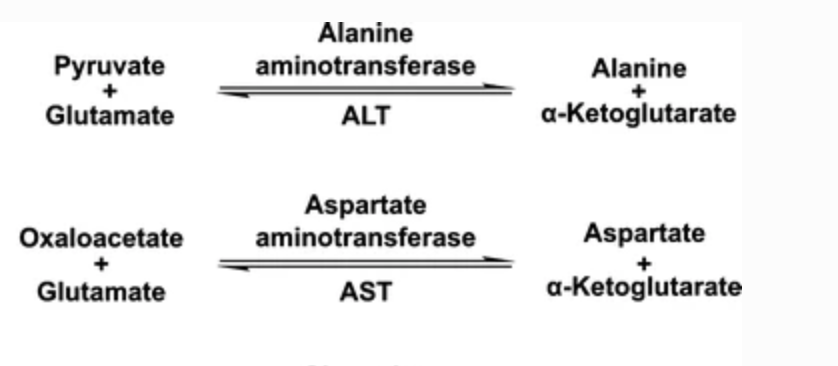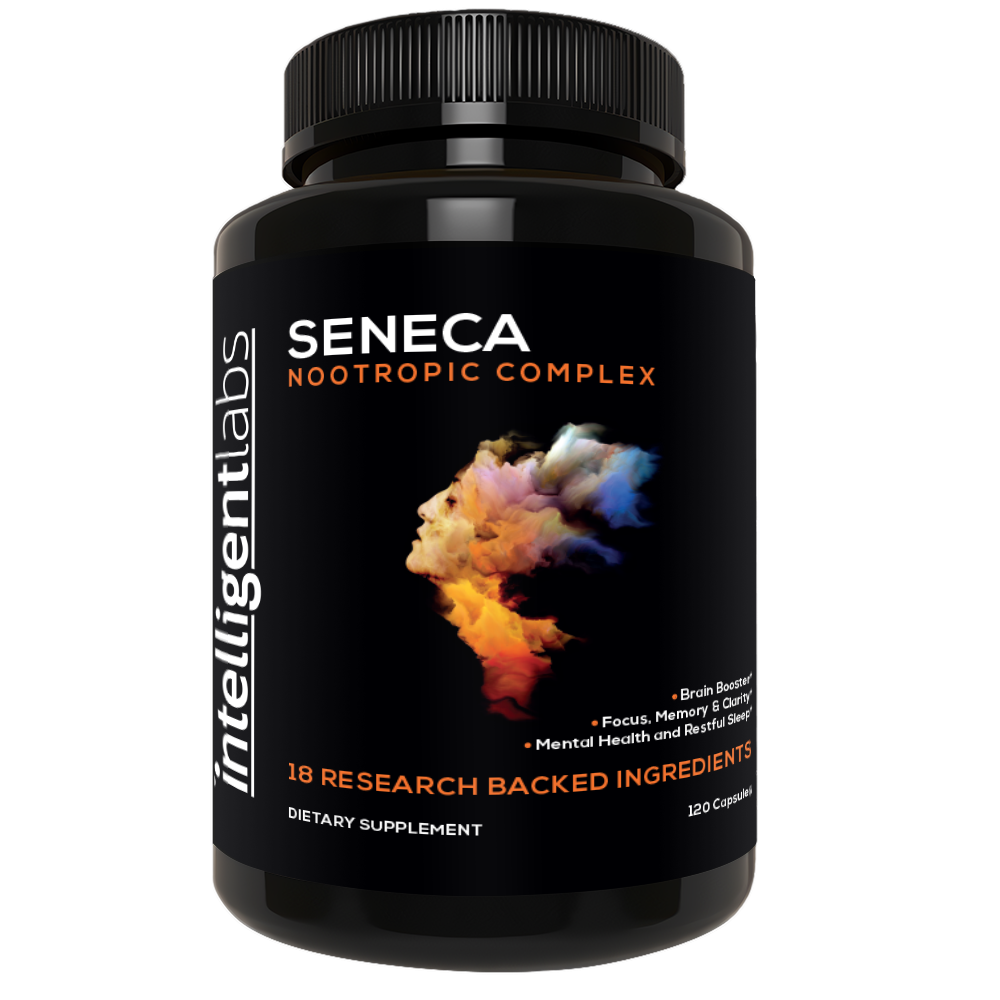Vitamin B6 is an incredibly important vitamin that’s involved in a huge range of functions in the body. Its active form – Pyridoxal-5-Phosphate (P5P) – is one of the key ingredients in our nootropic supplement, Seneca Nootropic Complex. Scroll down as we take a deeper look at this vitamin!
Table of Contents
What is Vitamin B6 and what does it do in the body?
Vitamin B6 is an essential nutrient and one of the eight B-complex vitamins (B1, B2, B3, B5, B6, B7, B9, and B12). There are six forms of B6 (1):
- Pyridoxine (most commonly found in food and many dietary supplements)
- Pyridoxal
- Pyridoxamine
- Pyridoxine-5-phosphate
- Pyridoxal-5-phosphate (most biologically active form – more on this later)
- Pyridoxamine-5-phosphate
Unlike some other vitamins, we cannot synthesize or make vitamin B6. Instead, we get it from food sources, such as fish, liver, organ meat, starchy veggies, and fruits. Therefore, a diet rich in B6 is a must to avoid deficiency.
What is Pyridoxal-5-phosphate (P5P)?
P5P is the active coenzyme form of B6 with the highest biological activity. It is also the most common measure of vitamin B6 blood levels in humans (2).
As a coenzyme, it’s involved in many P5P-dependent enzymes. This includes the synthesis of amino acids, amino acid metabolites, and neurotransmitters like dopamine, serotonin, GABA, and norepinephrine (3).
Every serving of Seneca Nootropic contains 4mg (or 235% of recommended daily value) of B6 in the active P5P form.
What are the main functions of Vitamin B6?
1) Transaminase Enzymes
B6 in its active form (P5P) is a co-factor for all Transaminase enzymes.
These enzymes catalyze the transformation of one amino acid into another amino acid. They combine the amino acid with something called a-keto acid, commonly found in glycolysis and the Krebs cycle. These biochemical pathways form the basis of energy production (4).
Transaminase enzymes also contribute to gluconeogenesis. This pathway produces sugar from amino acids, which are then transferred around the body for energy. It’s also used in the urea cycle, so nitrogen can be safely removed from the body (5).
The best-known Transaminase enzymes are probably alanine aminotransferase (ALT) and aspartate aminotransferase (AST). Standard blood tests check for both AST and ALT as they are liver function markers.

2) Glycogenolysis
B6 is also needed for the enzyme glycogen phosphorylase to work. This enzyme breaks down glycogen stores into readily usable glucose.
Since B6 is needed to break down glycogen into glucose and produce glucose in gluconeogenesis, a B6 deficiency is associated with reactive hypoglycemia. This is a condition that basically means low sugar levels (6).
A common symptom of reactive hypoglycemia is being able to fall asleep normally. However, due to low glucose levels, sleep is often interrupted. This is because glucose is needed to fuel the brain fully until morning (yes, it takes energy to sleep!).
Even for people in full ketosis, the brain still needs some glucose. And low glucose levels due to B6 deficiency can be a problem for people eating a ketogenic diet.
3) Neurotransmitter Synthesis
B6 is also needed to produce key neurotransmitters, such as dopamine, epinephrine, GABA, norepinephrine, serotonin, and melatonin. These are vital for cognition, attention, memory, sleep, and relaxation.
Unfortunately, when B6 levels are low, the B6 available will be prioritized for energy production. This means turning amino acids into keto acids via transaminase enzymes.
From an evolutionary standpoint, sufficient energy is the most important thing to keep us alive. Cognitive function and sleep can wait and are considered less important to keep us alive in the present moment.
So, it’s important to have sufficient levels of B6 to ensure we are not downregulating the production of key neurotransmitters.
Related article: What are nootropics?
4) The Folate Cycle and the Methylation Cycle
Vitamin B6 also plays a key role in both the Folate Cycle and the Methylation Cycle.
The Folate Cycle allows the production of Purines and Pyrimidines. Both contribute to DNA, RNA, and ATP production. It also produces 5-MTHF, a key component in the methylation cycle.
So, during methylation, methyl groups are moved around the body. These methyl groups are vital for a whole range of functions in the body. They help with liver health, neurotransmitter production, detoxification, DNA production, and gene expression.
The methylation cycle begins when methionine becomes S-Adenosyl methionine (SAMe). Once SAMe delivers the methyl groups, its job is done, and it becomes homocysteine.
The problem with homocysteine is that it can become toxic when levels are too high. High homocysteine levels can lead to both neurodegeneration and cardiovascular disease (7).
The body keeps homocysteine levels low by using 3 different pathways, which all require adequate levels of B6!
What’s the best type of Vitamin B6 to supplement with?

Choose products with the active form of B6, which is P5P. Our Seneca Nootropic Complex is a perfect example of a supplement that uses the active P5P form.
Many supplements will use the inactive form, Pyridoxine. Unfortunately, large amounts of pyridoxine can compete with the active P5P form at the B6 receptors. This means the inactive form can actually get into the B6 receptors by mistake. And because it’s inactive, it won’t work. This can result in an overall reduction of B6 activity (8).
Who is at risk for Vitamin B6 deficiency?
Deficiency is uncommon since B6 is readily available in many types of foods. However, certain groups may be prone to deficiency. For instance, vegans, alcoholics, the elderly, and diabetics. Also, those suffering from systemic inflammation and those taking certain oral contraceptives and other medications are at risk (9, 10, 11, 12).
Fortunately, supplementing with B6 is possible. But ensure you make the right choice since not all B6 supplements are created equal!
Final words
A well-rounded diet rich in fruits and vegetables will ensure you meet the required daily intake for vitamin B6. Doing so will help prevent a deficiency as well. As for vitamin B6 in supplement form, choose the best and most active form (P5P) to reap the many benefits of B6! Check out our list of the best nootropics and memory supplements here.




